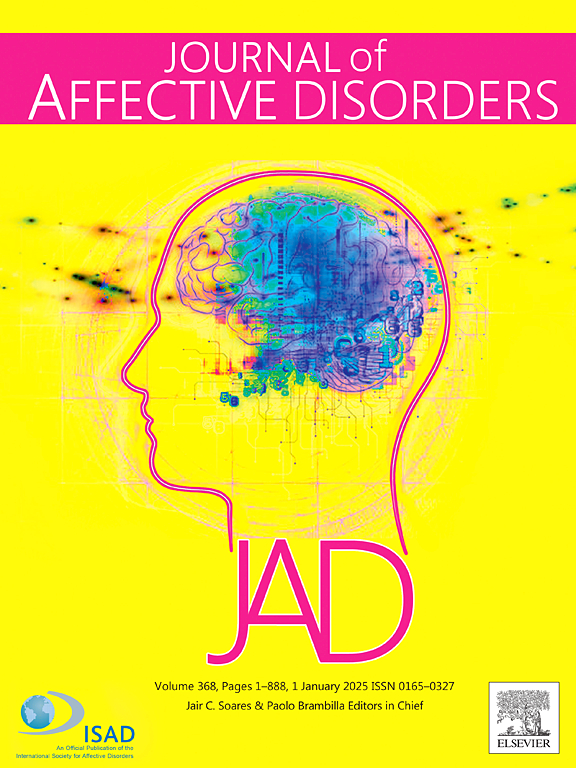Associations between triglyceride glucose index-related obesity indices and anxiety: Insights from the National Health and Nutrition Examination Survey 2007–2012
IF 4.9
2区 医学
Q1 CLINICAL NEUROLOGY
引用次数: 0
Abstract
Background
The triglyceride glucose index (TyG), along with its associated obesity indices, including TyG-body mass index (TyG-BMI), TyG-waist-to-height ratio (TyG-WHtR), TyG-waist circumference (TyG-WC), and TyG-weight-adjusted-waist index (TyG-WWI), have become valuable tools for evaluating insulin resistance in metabolic diseases. Few researches explored their links with anxiety.
Methods
This observational study leveraged data from the National Health and Nutrition Examination Survey (2007-2012), analyzing 6726 participants to investigate the correlations between TyG-related indices and anxiety using multivariable logistic regression, subgroup analysis, and curve fitting.
Results
After adjusting for confounders, significant positive correlations were identified between TyG, TyG-WWI, and anxious days [0.792 (0.262, 1.322); 0.033 (0.003, 0.063)]. These findings were reinforced when TyG-related indices were categorized into quartiles. Positive associations were further observed between TyG and anxiety state [1.243 (1.076, 1.437)], which was consistent across quartile groupings. Subgroup analyses revealed that racial stratification significantly influenced the relationship between TyG, TyG-BMI, TyG-WHtR, TyG-WC, TyG-WWI and anxious days. Gender stratification significantly influenced the relationship between TyG and anxiety state. Linear associations were established between TyG and anxious days, anxiety state with regression coefficients of 0.873 and 1.254 respectively. Non-linear relationships and threshold effects were detected, with inflection points at 187.731, 3.040, 725.288, and 104.011 (for TyG-BMI, TyG-WHtR, TyG-WC, TyG-WWI with anxious days) and 188.677, 3.059, 730.251, and 103.869 (for TyG-BMI, TyG-WHtR, TyG-WC, TyG-WWI with anxiety state).
Conclusions
These results enhance our understanding of relationships between TyG-related indices and anxiety, providing valuable insights for the prevention and management of obesity and anxiety.
求助全文
约1分钟内获得全文
求助全文
来源期刊

Journal of affective disorders
医学-精神病学
CiteScore
10.90
自引率
6.10%
发文量
1319
审稿时长
9.3 weeks
期刊介绍:
The Journal of Affective Disorders publishes papers concerned with affective disorders in the widest sense: depression, mania, mood spectrum, emotions and personality, anxiety and stress. It is interdisciplinary and aims to bring together different approaches for a diverse readership. Top quality papers will be accepted dealing with any aspect of affective disorders, including neuroimaging, cognitive neurosciences, genetics, molecular biology, experimental and clinical neurosciences, pharmacology, neuroimmunoendocrinology, intervention and treatment trials.
 求助内容:
求助内容: 应助结果提醒方式:
应助结果提醒方式:


